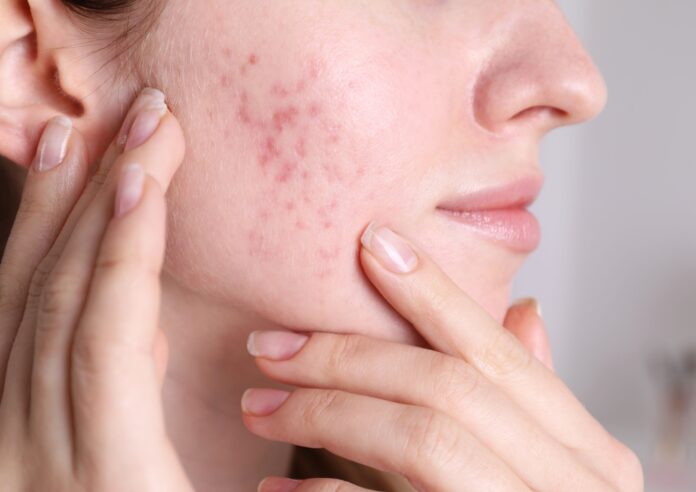Acne scars are permanent textural changes and indentations that occur on the skin as a result of severe acne. When the skin tissue gets damaged due to inflammation, the healing process may result in either excess collagen production (leading to raised scars) or tissue loss (resulting in depressed scars). The effectiveness of Acne Scar Treatment in Dubai lies in the synergy of science, consistency, and individual care.
Types of Acne Scars
Acne scars come in various forms, each requiring a tailored approach:
- Atrophic scars: Shallow depressions, often from severe acne.
- Boxcar scars: Broad, box-like depressions with sharply defined edges.
- Ice pick scars: Deep, narrow scars extending into the dermis.
- Rolling scars: Wave-like skin texture caused by damage beneath the surface.
Why Treatment is Necessary
Untreated acne scars can affect confidence and skin health. They often become more noticeable over time, especially as the skin loses elasticity. Hence, early and appropriate intervention is essential for smoother, clearer skin.
Factors That Make Acne Scar Treatment Effective
1. Skin Type and Condition
- Personalized Assessment: The success of any treatment greatly depends on an individual’s skin type, tone, and the nature of their scars.
- Collagen Production: Skin with higher collagen potential may respond better to scar-repairing procedures.
2. Depth and Type of Scarring
- Shallow vs. Deep Scars: Treatments differ depending on whether the scars are superficial or extend into deeper layers of the skin.
- Matching Treatment to Scar Type: Effective treatments are chosen based on the exact scar structure—what works for ice pick scars may not suit rolling scars.
3. Advanced Technology and Techniques
- Precision Tools: High-quality equipment, such as microneedling pens and resurfacing lasers, improves precision and effectiveness.
- Customizable Intensity: Techniques can be adjusted to suit sensitive or resistant skin types, ensuring optimal results.
4. Layered Treatment Approaches
- Combination Therapy: Effective scar management often includes a blend of techniques such as microneedling, chemical peels, and laser resurfacing.
- Sequential Sessions: Gradual, consistent sessions lead to significant improvements over time.
5. Skin Preparation and Aftercare
- Pre-Treatment Regimen: Preparing the skin with nourishing products can enhance responsiveness.
- Post-Treatment Maintenance: Ongoing skincare, including hydration and sun protection, maintains results and prevents further damage.
Common and Effective Methods of Acne Scar Treatment
Microneedling
A technique that uses fine needles to stimulate the skin’s natural healing process by creating tiny punctures. This promotes collagen formation, which helps fill in depressed scars.
Benefits:
- Boosts natural healing
- Safe for most skin types
- Improves overall skin texture
Chemical Peels
Chemical solutions are applied to the skin to remove the top layers, allowing smoother, more evenly pigmented skin to replace damaged areas.
Benefits:
- Reduces surface-level scars
- Enhances skin brightness
- Even out the tone
Laser Resurfacing
Uses focused light beams to remove layers of skin and encourage regeneration. Both ablative and non-ablative lasers can be used depending on scar depth.
Benefits:
- Deep penetration for severe scars
- Stimulates collagen
- Noticeable smoothing effect
Subcision
A minor surgical procedure where a needle is inserted to break up the fibrous tissue beneath the scar.
Benefits:
- Releases tethered scars
- Enhances results when combined with other treatments
- Especially effective for rolling scars
Dermal Fillers
Injectable fillers can temporarily plump up depressed scars, creating a more even skin surface.
Benefits:
- Instant visual improvement
- Non-invasive
- Suitable for atrophic scars
How Treatments Compare:
| Treatment Method | Best For | Recovery Time | Repeat Sessions Required |
|---|---|---|---|
| Microneedling | Shallow atrophic scars | 1–3 days | Yes, monthly |
| Chemical Peels | Surface discoloration | 3–7 days | Yes, multiple |
| Laser Resurfacing | Deep scars | 7–14 days | Yes, spaced out |
| Subcision | Rolling scars | 1–2 days | Sometimes |
| Dermal Fillers | Depressed scars | Immediate | Every few months |
The Role of Time and Consistency
Treatment Duration
Acne scar treatment is not a one-time event. Effective outcomes require a commitment to long-term skincare routines and several sessions spaced out over time.
Consistency in Application
Regular follow-ups and skin nourishment between sessions amplify the benefits of treatment and reduce the chances of scar recurrence.
Benefits
With consistent application, most people experience:
- Smoother skin texture
- Improved skin tone
- Reduced visibility of scars
Importance of Personalized Plans
Tailored Solutions Work Best
Generic treatments may not yield results. What makes Acne Scar Treatment effective is the customization of therapy based on an individual’s scar pattern, lifestyle, and skin sensitivity.
Skin Sensitivity Considerations
For example, darker skin tones may require less aggressive treatments to prevent hyperpigmentation, while oily skin might benefit from exfoliative techniques.
The Science Behind Scar Improvement
Collagen Induction
Most scar treatments work by promoting collagen remodeling—a natural process where old tissue is replaced with new, healthy skin.
Cell Turnover
Chemical and mechanical exfoliation stimulates cell turnover, which accelerates the shedding of damaged layers.
Vascular Regulation
Some treatments, like laser therapy, help reduce redness by shrinking blood vessels, resulting in a more uniform appearance.
Skin Routine for Scar Maintenance
| Routine Step | Recommended Product Type | Frequency |
|---|---|---|
| Cleanser | Gentle, non-comedogenic | Twice daily |
| Exfoliator | Mild chemical (AHA/BHA) | 2–3 times/week |
| Serum | Vitamin C / Hyaluronic Acid | Daily |
| Moisturizer | Non-oily, hydrating | Daily |
| Sunscreen | Broad-spectrum SPF 30+ | Every morning |
FAQ’s
1. How long does it take to see results from acne scar treatment?
Most individuals start noticing visible improvements after 3 to 4 sessions. However, results vary depending on scar type and skin response.
2. Can acne scar treatments be done on all skin tones?
Yes, but the treatment must be customized to avoid side effects like pigmentation, especially in darker skin tones.
3. Are the results of acne scar treatments permanent?
While the results can be long-lasting, maintenance treatments may be needed to preserve skin texture over time.
4. Can acne scars be completely removed?
Complete removal is rare, but professional treatments can reduce their visibility by up to 80–90%, leading to smoother and clearer skin.
5. What makes Acne Scar Treatment in Dubai unique compared to other regions?
The effectiveness lies in the personalized care approaches, latest non-invasive technologies, and focus on holistic skin health principles.
Conclusion
Acne scars can be stubborn, but with the right approach, their appearance can be dramatically minimized. A combination of techniques tailored to skin type, scar depth, and personal goals ensures effective and lasting results. Whether dealing with boxcar, rolling, or ice pick scars, the effectiveness of Acne Scar Treatment lies in the synergy of science, consistency, and individual care.































